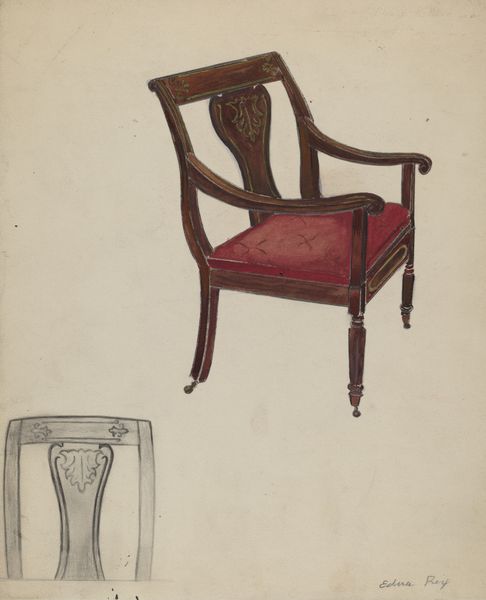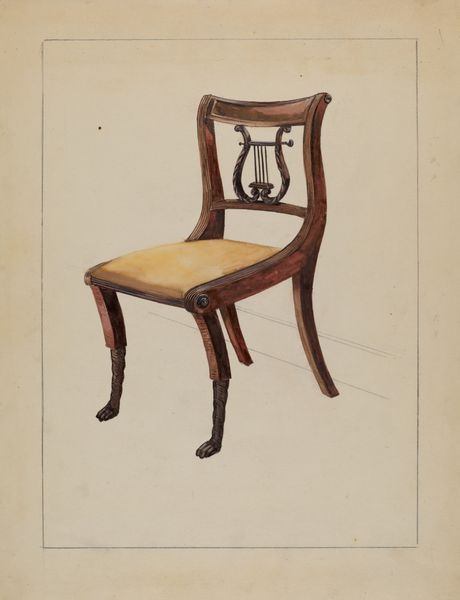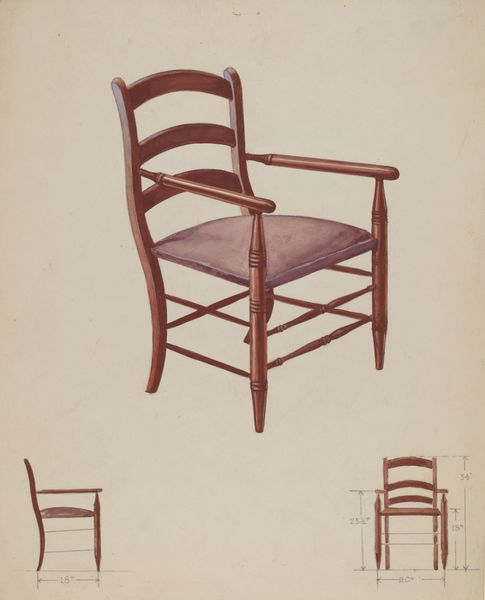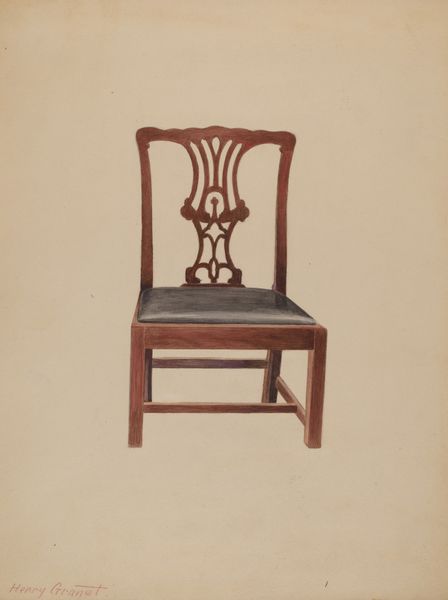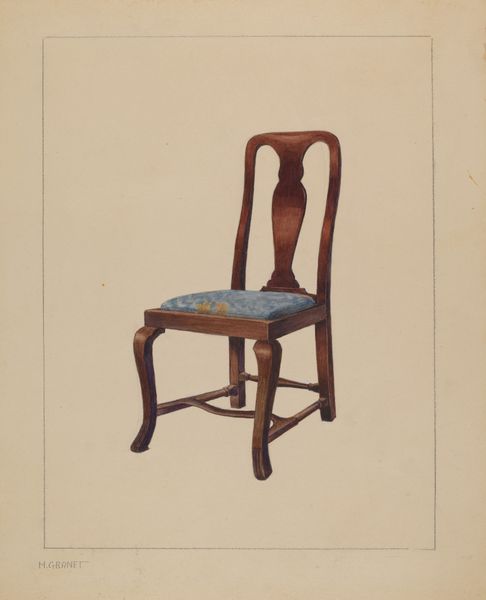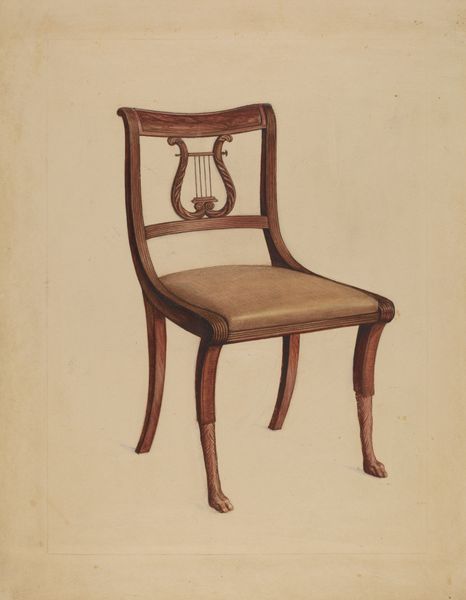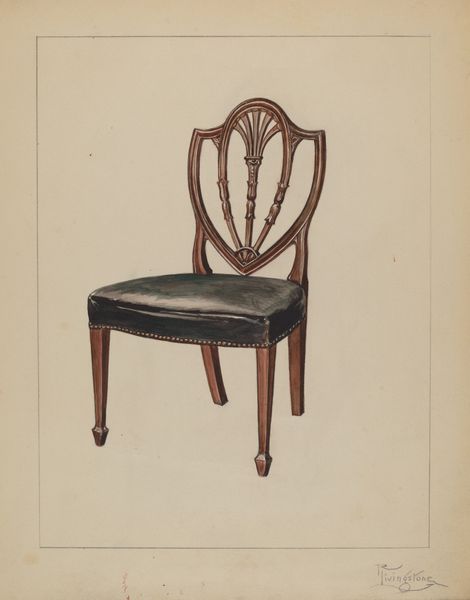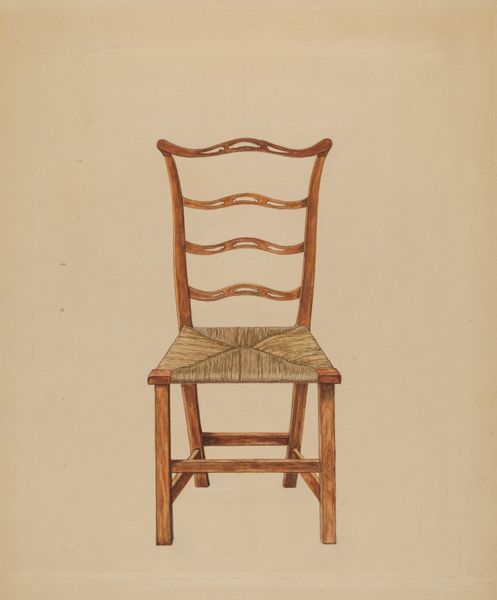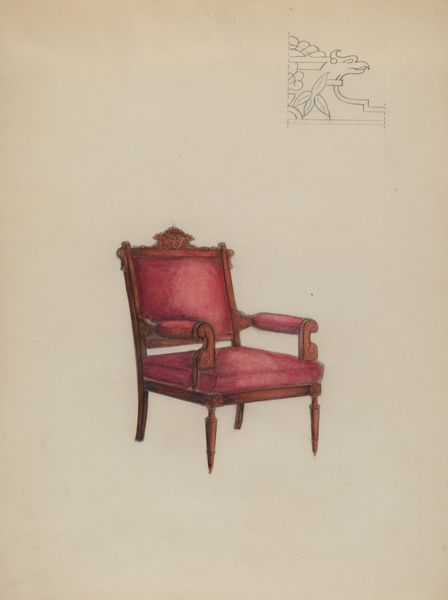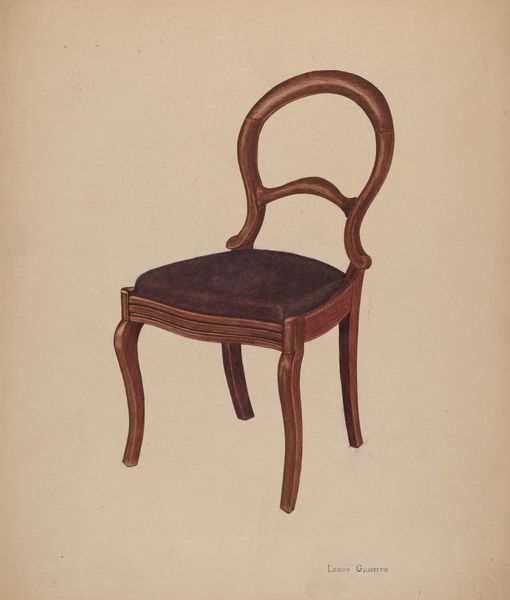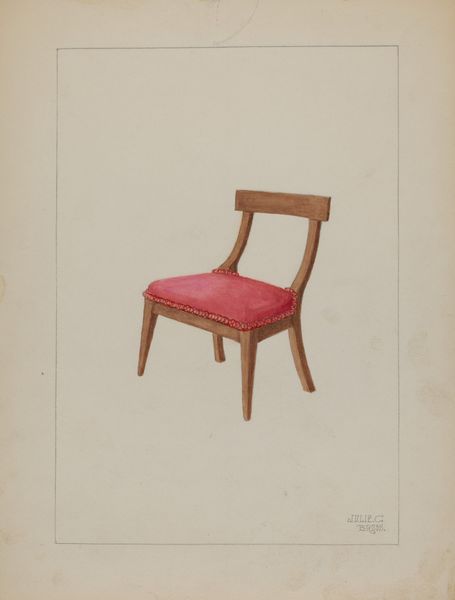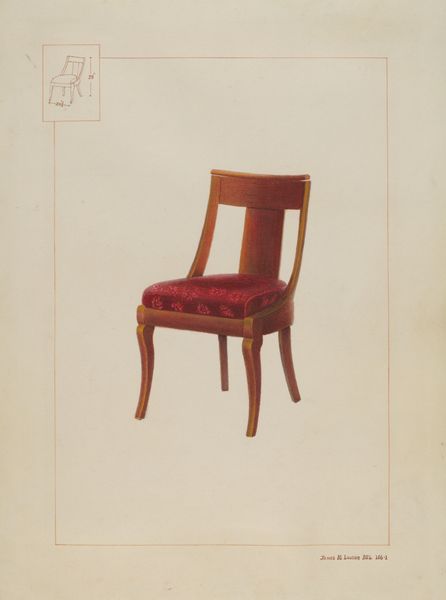
drawing, watercolor
#
drawing
#
watercolor
#
academic-art
#
watercolor
Dimensions: overall: 28 x 22.8 cm (11 x 9 in.)
Copyright: National Gallery of Art: CC0 1.0
Curator: Here we have Edna C. Rex's watercolor and drawing titled "Side Chair," created sometime between 1935 and 1942. It's a relatively small piece. What are your initial thoughts? Editor: It strikes me as quite sparse. The rendering of the chair itself has some warmth, that deep reddish brown is inviting, but the presentation feels deliberately devoid of context. Isolated like a specimen. Curator: Indeed. The means of representing this everyday object— a chair, something usually associated with comfort and use—are presented here as a very deliberate process of construction and even deconstruction. Editor: How so? Curator: Look at the schematic diagrams she includes around the main chair image, the isolated rectangle near the top, or that side view. They point to a kind of disassembling, almost like technical blueprints. These offer clues about manufacturing processes but also seem to divorce the chair from its function within a domestic space, let’s say. What were her influences here? Editor: I see what you mean. It challenges that idea of "art for art's sake". It makes me consider questions of design within larger movements of the time, Bauhaus ideas about utility versus ornamentation and what role artworks such as this serve in documenting shifts in material culture, maybe mass production in general, and their effects on public values. Curator: Precisely! And beyond mere documentation, Rex highlights labor and craft by rendering each detail with clear intention. The artistic method celebrates not only the finished product, but moreover honors labor inherent to crafting something meant for practical employment by its users in a household or workshop. Editor: It is rather poignant. We see not just a chair, but an artifact brimming with questions about what we value in daily life, questions amplified by the deprivations that the depression surely visited on this design, from rendering of each line to the actualization, or not, of that specific chair to enter the economy. Curator: I concur entirely! Examining works like this allows to expand conversation far beyond its mere subject: the piece promotes a more intricate interpretation around broader narratives and significance within material expression when put alongside a wide breadth economic history surrounding art production during that era . Editor: And in viewing everyday objects through a thoughtful cultural perspective in museums, one gets to reconsider familiar designs and the society that once placed real and artistic value on something meant for mundane utility.
Comments
No comments
Be the first to comment and join the conversation on the ultimate creative platform.
